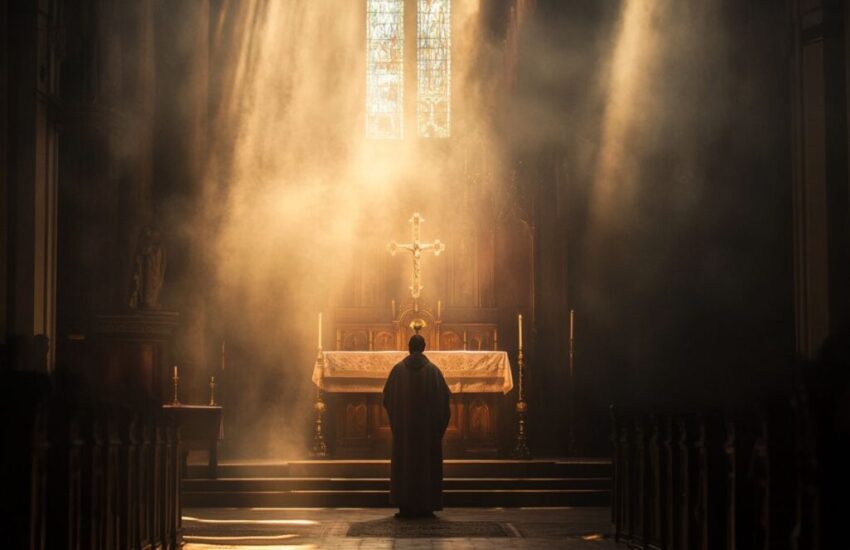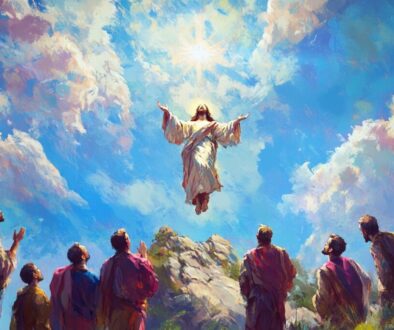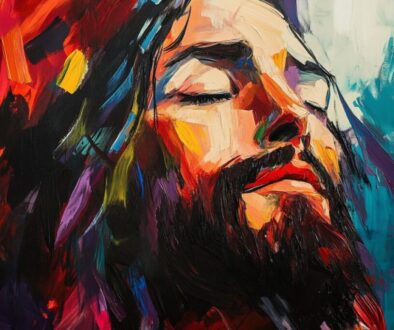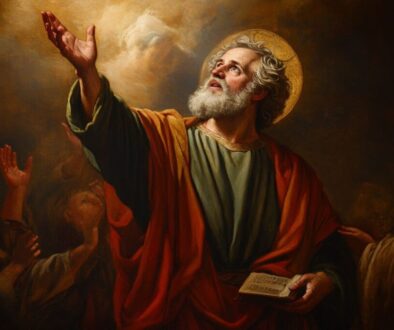Priesthood According to the Order of Melchizedek – Sermon by Father Levine

Fr. Joseph Levine; Holy Family Catholic Church and Missions, Burns, Oregon; October 27, 2024
Definitions are very important. Without them we literally do not know what we are talking about; we use words but do not know what they mean. Some definitions are rather arbitrary, “This what I mean when I use the word.” Good, at least I know what you mean by it. Others are quite real, capturing the common experience of reality, expressed in words.
Definitions are important and so when the word of God gives us a definition, we should take note. In today’s 2nd reading St. Paul gives us a very important definition: Every high priest is taken from among men and made their representative before God, to offer gifts and sacrifices for sins.
The divinely inspired definition does not come out of the blue. Standing behind it is the whole of the Old Testament, with its description of priestly activity. In the Old Testament we see priests, established by the law, standing before the altar of God, offering gifts and sacrifices on behalf of the people. St. Paul’s definition simply sums up that experience of the people of God. The priesthood is defined by the offering of sacrifice, the supreme act of worship.
St. Paul, though, does more than give us the definition of a priest, he applies the definition to Jesus Christ.
Jesus was constituted priest by becoming man for us men and our salvation. He was “called by God” through the very mystery of his Incarnation in the womb of the Virgin Mary. Every other priest is first a man, then is made a priest. In the case of Jesus Christ, he was a priest from the first moment of his conception. As Son of God in eternity he is not yet a priest because he is not taken from among men. The moment the Son of God, who is always with his Father in eternity, becomes man, he stands before God, his Father, through his sacred humanity, and he does so as the representative not just of a particular people, in a particular time and place, but of the whole human race, always and everywhere.
As man, Jesus is able also to have compassion on us – a needed quality for a priest – because he shares in our weakness, similarly tested in every way, but without sin. (cf. He 4:15) Jesus Christ shares our mortality and suffering, but not our ignorance, error, or sinfulness.
As a priest, Jesus must also have something to offer to God as a “gift and sacrifice for sin.”
In the Old Testament the priest, like Aaron, was one thing, the sacrifice, a bull, lamb, or goat, or bread and wine, was another. Nevertheless, while the priest offered something distinct from his very person, the sacrifice of victim was a symbol of his self-offering, a sign not just of worship, but of love. Still, the mere symbol was not enough to achieve the purpose of the priesthood, the forgiveness of sins, for it is impossible that the blood of bulls and goats should take away sins. (He 10:4)
Jesus, however, does not offer something other than himself, other than his very Body and Blood; his sacrifice is no mere symbol, but reality.
Later in the Letter to the Hebrews, St. Paul, referring to the Psalm, writes, When Christ came into the world, he said, ‘Sacrifices and offerings thou hast not desired, but a body hast thou prepared for me. … Then I said, ‘Lo, I have come to do your will, O God.’ … By that will we have been sanctified through the offering of the body of Jesus Christ once for all. (He 10:5,7,10)
In the Old Testament, just as there were many animals offered in sacrifice, there were many priests in the line of Aaron, of the tribe of Levi. One died and another took his place throughout the ages. Each priest and each sacrifice was a figure or prophecy of Christ to come. All the blood of the victims shed was as symbol of the Blood of Christ poured out on the Cross for our salvation.
Today, we also heard these mysterious words about Christ, You are a priest forever according the order of Melchizedek.
Melchizedek is a mysterious figure who appears in Genesis, blessing Abraham, and is referred to in a Psalm, The Lord has sworn and will not repent, ‘You are a priest forever according to the order of Melchizedek.’ (Ps 110[109]:4; cf. Gen 14:17-20) That is all the Old Testament has to say about Melchizedek, yet St. Paul, writing to the Hebrews, reveals that this mysterious figure is key to understanding the priesthood of Christ.
In the first place, Jesus Christ is one priest, an eternal priest, a priest forever. When he made purification for sins, he sat down at the right hand of the Majesty on high, having become as much superior to the angels as the name he inherited is more excellent than theirs. (He 1:3-4) And, It was fitting that we should have such a high priest, holy, blameless, unstained, separated from sinners, exalted above the heavens. He has no need like those high priests, to offer sacrifices daily, first for his own sins and then for those of the people; he did this once for all when he offered himself up. (He 7:26-27) So, He always lives to make intercession for us. (He 7:25)
Since ascending into heaven, Jesus is seated at the right hand of the Father as both king and priest, always showing the Father the glorified and transformed wounds he suffered on our behalf. So, St. John reports that he saw before the throne of God a Lamb standing as though it had been slain. (Rev 5:6)
Christ’s priesthood is also shared by the ordained priests of the Church and Melchizedek points to the way in which Christ’s eternal priesthood is visibly represented on earth. Melchizedek offered bread and wine, (Gen 14:18) the forms that Jesus used to entrust the sacrifice of his Body and Blood to the Church, to the hand of the priests who visibly represent his priesthood in the Church.
In the beautiful words of the Council of Trent: “In this divine sacrifice which is celebrated in the mass, that same Christ is contained and immolated in an unbloody manner, who once offered Himself in a bloody manner on the altar of the cross; … the victim is one and the same, the same now offering by the ministry of priests, who then offered Himself on the cross, the manner alone of offering being different.” (Council of Trent, Session XXII, “On the Sacrifice of the Mass”)
At the moment of consecration, time and eternity meet, Christ seated at the right hand of the Father is made present on the altar, and we are touched by the power of what he did 2,000 years ago on the Cross.
St. John Vianney exclaimed: “The priest continues the work of redemption on earth…. If we really understood the priest on earth, we would die not of fright but of love…. the Priesthood is the love of the heart of Jesus.” (cited in CCC 1589)
Now, in the ordained priesthood we need to consider character and grace. There is the sacramental character stamped on the soul of the priest that gives him the sacred power enabling him to act in the person of Christ, to offer the holy sacrifice and to forgive sins, and there is also the interior grace of holiness. By means of the character, the priest is able minimally to fulfill the office of the priesthood, because it is Christ working through him, rather than the priest himself working. Without the interior grace of holiness, however, the priest, in his own person becomes an obstacle rather than an aid to Christ’s work.
There is a saying that “if the priest is a saint, the people will be fervent; if the priest is fervent, the people will be pious; if the priest is pious, the people will at least be decent; if the priest is only decent, the people will be godless.” (Dom Jean-Baptiste Chautard, O.C.S.O., The Soul of the Apostolate, p. 39)
While the ordained priests visibly represent the one eternal priesthood of Christ upon earth, all the baptized – the ordained priest is first one of the baptized before he is a priest – in their own fashion also share in Christ’s priesthood. The Lamb of God ransomed men from every tribe and tongue and people and nation, and made them a kingdom and priests to our God. (Rev 5:9-10)
This priesthood of the baptized is not exercised, in the first place, in a visible public fashion but through offering spiritual sacrifices acceptable to God through Jesus Christ. (1 Pe 2:5) So it is that St. Paul exhorts all of us through the mercies of God to offer your bodies as a living sacrifice holy and pleasing to God, which is your spiritual worship. (Rm 12:1) That requires that we no longer yield the members of our bodies to sin as instruments of wickedness, but that we yield ourselves to God as men who have been brought from death to life, and our members to God as instruments of righteousness. (Rm 6:13)
This spiritual priesthood of the baptized requires the grace of baptism, sanctifying grace, which makes us to be children of God in Christ. There is, however, also a visible aspect to the baptismal priesthood, given us through the sacramental character of baptism. This enables us to take part in the sacraments of the Church; it enables us to unite ourselves, our personal spiritual offering, to the offering of Christ’s Body and Blood in the holy sacrifice of the Mass and it also enables us to receive the same Body and Blood in holy communion, as the fruit and full participation in the sacrifice.
In today’s Gospel, the blind Bartimaeus, hears that Jesus is passing by and cries out, Jesus, son of David, have pity on me. Jesus stops and asks him what he wants. He replies, Master, I want to see. Jesus restores his sight and tells him to go his way. Bartimaeus’ way now is to follow the way of Jesus, the way to Jerusalem, where he will offer the sacrifice of his Body and Blood on the Cross, the gift of himself for our salvation, the revelation of God’s love.
We need to ask Jesus for the true vision of faith that we might see the glory of his priesthood, which he shares with the ordained priests and with all the baptized, and so follow him on the way of self-offering to the glory of God and the salvation of souls.
Seek a Deeper Connection with God and Join Lay Cistercians of South Florida
Lay Cistercians of South Florida, is a community of lay people who seeks to have a deeper connection with God by living a life inspired by the monks and nuns through Lay Monasticism. Learn more about what is a Lay Cistercian on our website. Anyone who aspires to do the same as us, and is a confirmed Catholic is welcome to join us! We meet every second Saturday of the month at Emmanuel Catholic Church in Delray Beach, Florida.

This Content Has Been Reviewed For Accuracy
This content has undergone comprehensive fact-checking by our dedicated team of experts. Discover additional information about the rigorous editorial standards we adhere to on our website.



